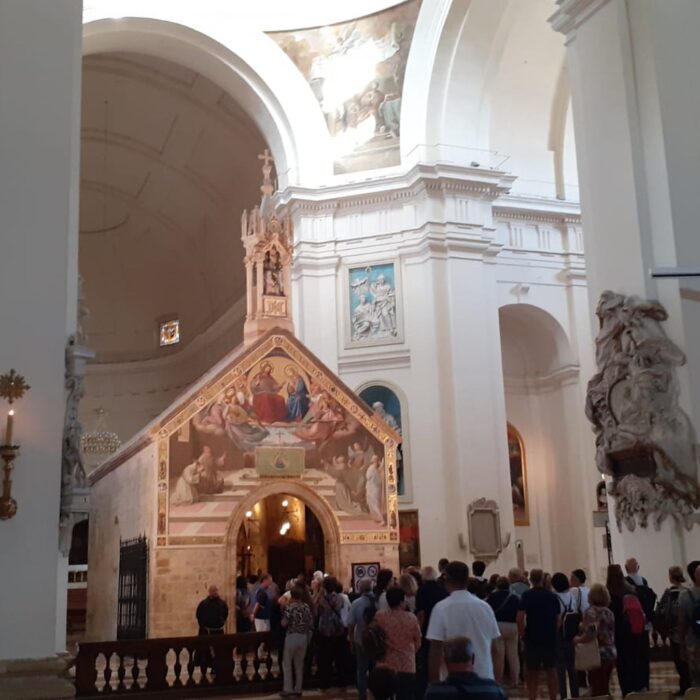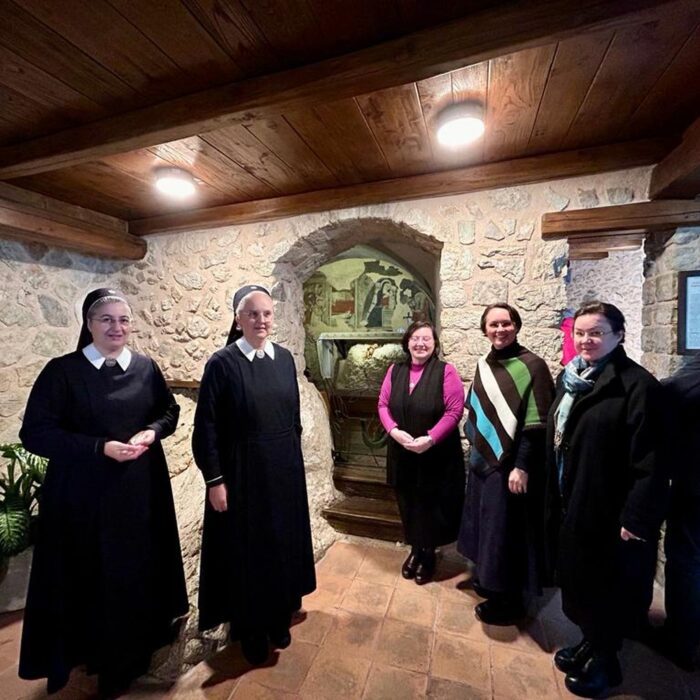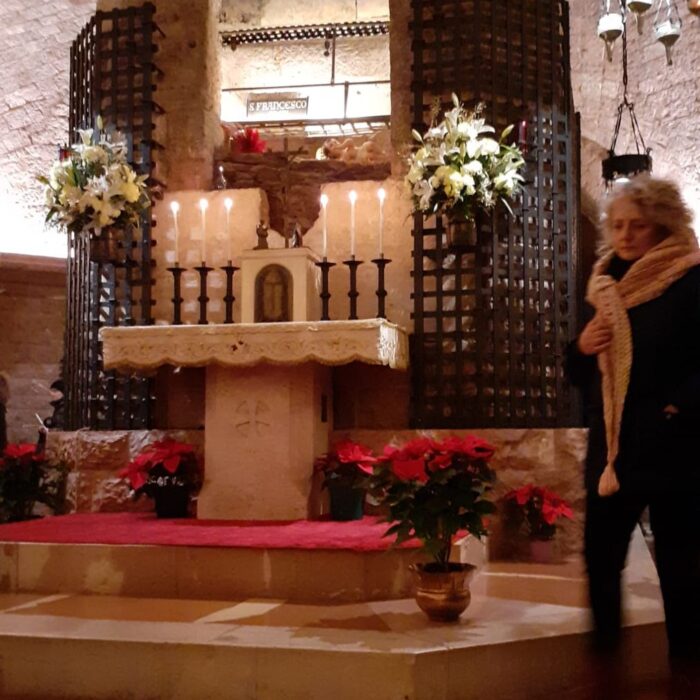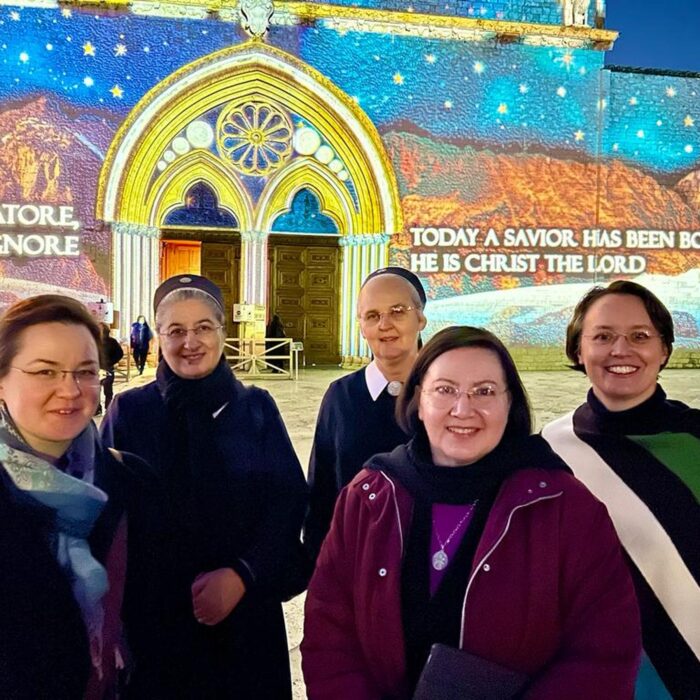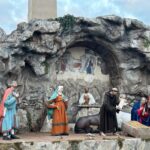
After celebrating Christmas Eve Mass with Pope Francis in St. Peter’s Basilica, it was only right to go to the manger in St. Peter’s Square to adore the newborn baby Jesus. Passing the crowds expressing their joy by singing Christmas carols from different countries or through video calls and photos, we approached the nativity scene, which commemorates the first living nativity scene built by Saint Francis of Assisi 800 years ago . On the previous days we had already admired and photographed the nativity scene, but still without the baby Jesus.
Where was the baby Jesus?
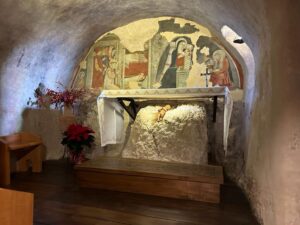
This was the night we had all been waiting for to go “to the Grotto of Bethlehem” and worship the Child in the Manger. For a moment we were surprised and disappointed as our eyes looked at the empty manger. But where was the baby Jesus? The Nativity King was already there, but he was not lying in the manger, nor in the arms of Mary and Joseph, but in those of Francis of Assisi, as the story tells of that Christmas night in Greccio in 1223, when Jesus appeared at the manger he smiled and Francis took him in his arms. And all the people who saw him went home with hearts full of joy.
To the place of origin of the living nativity scene
The joy they once felt has also awakened in us the desire to go on pilgrimage. Some of us from the Rome filiation headed to Greccio, a small medieval village in the province of Rieti, Italy, where the tradition of the donkey and ox nativity scene originated. But before we reached this destination, we made one more stop and walked in the footsteps of Saint Francis. We climbed in the heights of the forest of Fonte Colombo , where Francis stopped on his way back from one of his trips to undergo surgery for a serious eye problem. Looking at this landscape, it is not difficult to understand that nature inspired Francis to choose this place to write the Rule of St. Francis. Every rock, every stone tells a story about certain people, like the Sacro Speco cave on the mountainside. Everything is holy there because God made himself present there and transformed this small piece of land into the “new Sinai”.
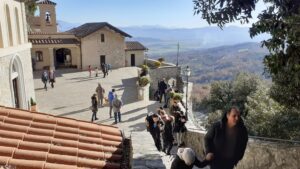
If you descend the mountain and a few minutes later climb an even steeper mountain, you will find the grotto of the first living nativity scene. Perhaps at this point we begin to think about what it would have been like to travel this route on foot or using the means of transport of that time, over strenuous paths through forest and rocks, always up and down, through storms and snow. At the same time, we began to understand Francis when he praises God through creation and creatures, because the beauty and majesty of everything our eyes can see elevated the soul and the heart. The highlight of Greccio is the grotto, where the miracle of Holy Night took place in a tangible way.
A miracle of love, the smile of God
It is said that during his visit to the Holy Land, Francis witnessed the birth of Jesus first hand and wanted to pass on this experience to the people to whom he preached, since at that time the celebrations were held in Latin. That’s why he decorated the grotto with the nativity scene, the donkey and the ox, figures from people’s daily lives. And everyone who went there experienced a miracle of love, the smile of God! The grotto is located under the old Franciscan monastery, where one can see the smallness and poverty of the dormitories and oratories, especially the cells in which great saints such as Saint Francis and Saint Bonaventure lived.
Our “Franciscan” pilgrimage took us another 100 kilometers to Assisi. What can you see in Assisi in a short time and where do you start? Assisi is simply the city of the patron saint of Italy and Saint Clare. But it is being renewed in faith more and more by a young saint of our century, Carlo Acutis .
Let’s proceed in stages. We started in Assisi with a visit to the Cathedral of San Rufino, where Francis and Clare were baptized. The reliquary containing the heart of Carlo Acutis is kept in this cathedral. Walking through the streets of this ancient and traditional city, we first visited the Basilica of Saint Clare, whose body is on display and where we were able to see the exhibition of the clothing worn by the saint.
Carlo Acutis, saint of a new age
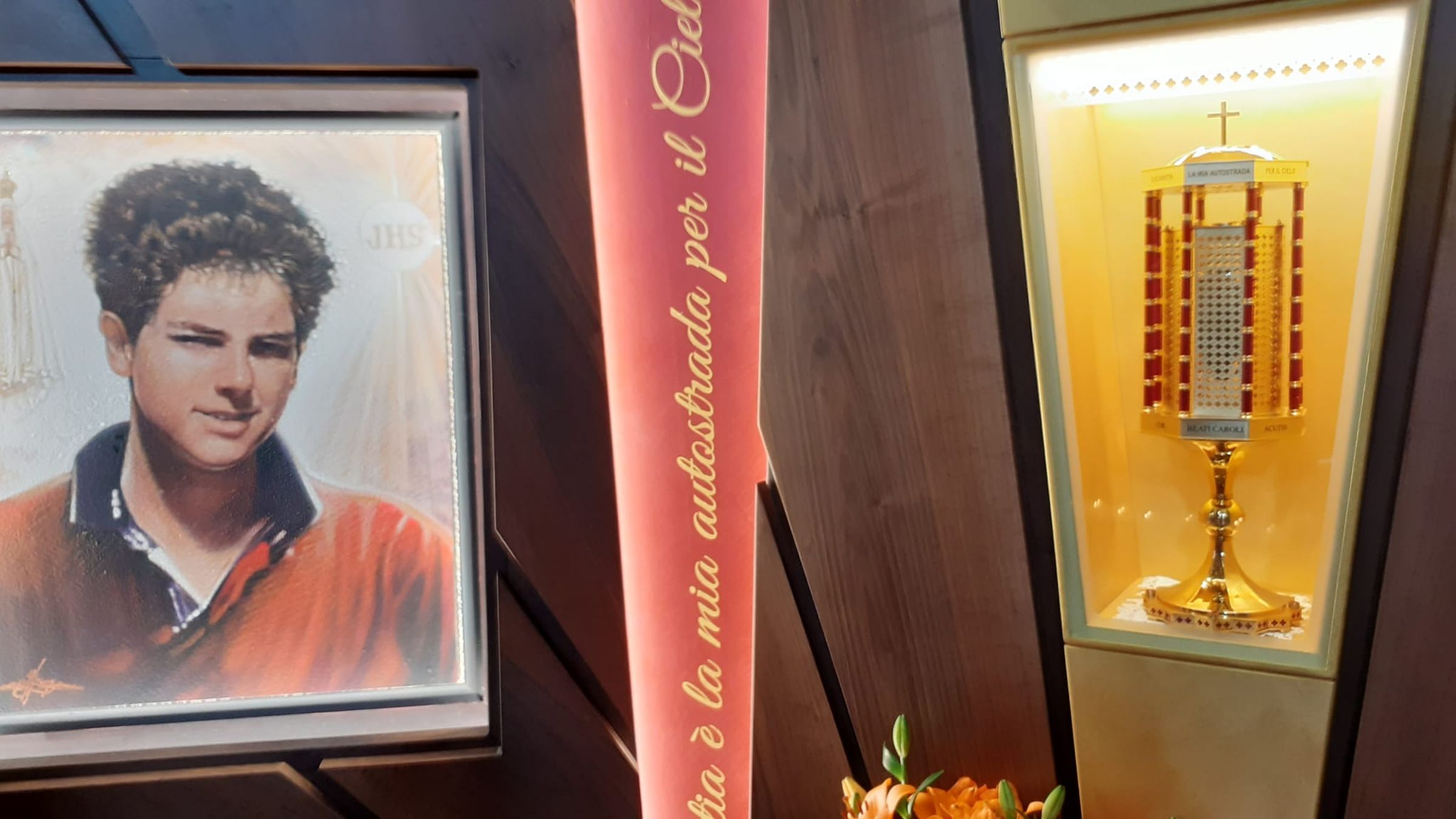
We continued to the Sanctuary where Carlo Acutis is located, a holy place that touches us with its simplicity and transmits the love for Jesus and the Eucharist of this young man in jeans and sneakers who just seems to be sleeping. It is clear that his example of the holiness of youth and our century speaks to the youth of today, as we found many groups of teenagers and young people doing a treasure hunt about the history of yesterday and today.
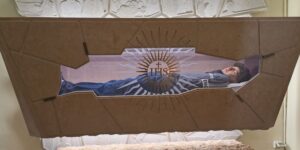
In fact, we Sisters of Mary were constantly asked by young people to take a photo with the group, take selfies and record “interviews” so as not to miss a word. “How can we accept Jesus into our hearts?” they asked us. In Assisi faith is alive and growing.
There were crowds and queues everywhere to enter the holy sites. This was also the case when visiting the grave of Saint Francis. Whether believer or disbeliever, everyone tries to walk past the patron saint of Italy. There really is a certain magic in Assisi at Christmas, especially when it gets dark, not only because the streets are illuminated, but also because images of sacred history are projected onto the facades of the basilicas. And of course, the ultimate Christmas attraction is the life-size nativity scene in front of the Basilica of Saint Francis.
As we left the city of Assisi, we ended our pilgrimage at the Basilica of Santa Maria degli Angeli, the place where Francis died. This church was built to protect and venerate the small church Portiuncula. Francis had rebuilt this church in obedience to the words of God that he had heard before the crucifix of San Damiano: “Francis, go and rebuild my church, which is in ruins”. There the vocation of Francis and the first Franciscan community emerged; there Francis received forgiveness after overcoming temptation; St. Clare consecrated her life there; There Francis wept and greeted his “brother Death” with a song.
Before returning to Rome, we literally entered the manger, for in front of the basilica a small village was built with a grotto that allowed us to enter and walk through the “Streets of Bethlehem.”
Undoubtedly, Rome cannot be surpassed in size and historical Christian wealth. But for us, Christmas will never be separated from the memory and experience of the simplicity we saw in Greccio and the grace we experienced 800 years after the miracle of Christmas Night in the first living nativity scene of Saint Francis can.
